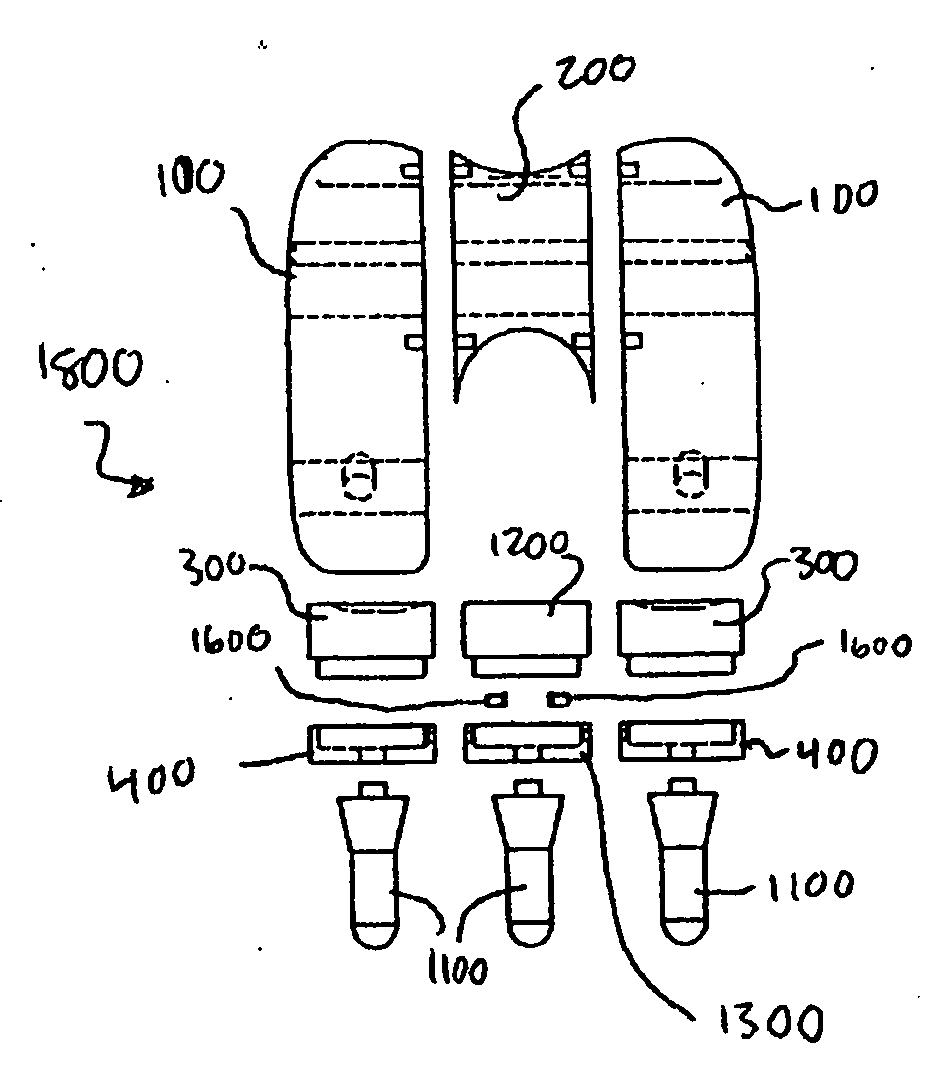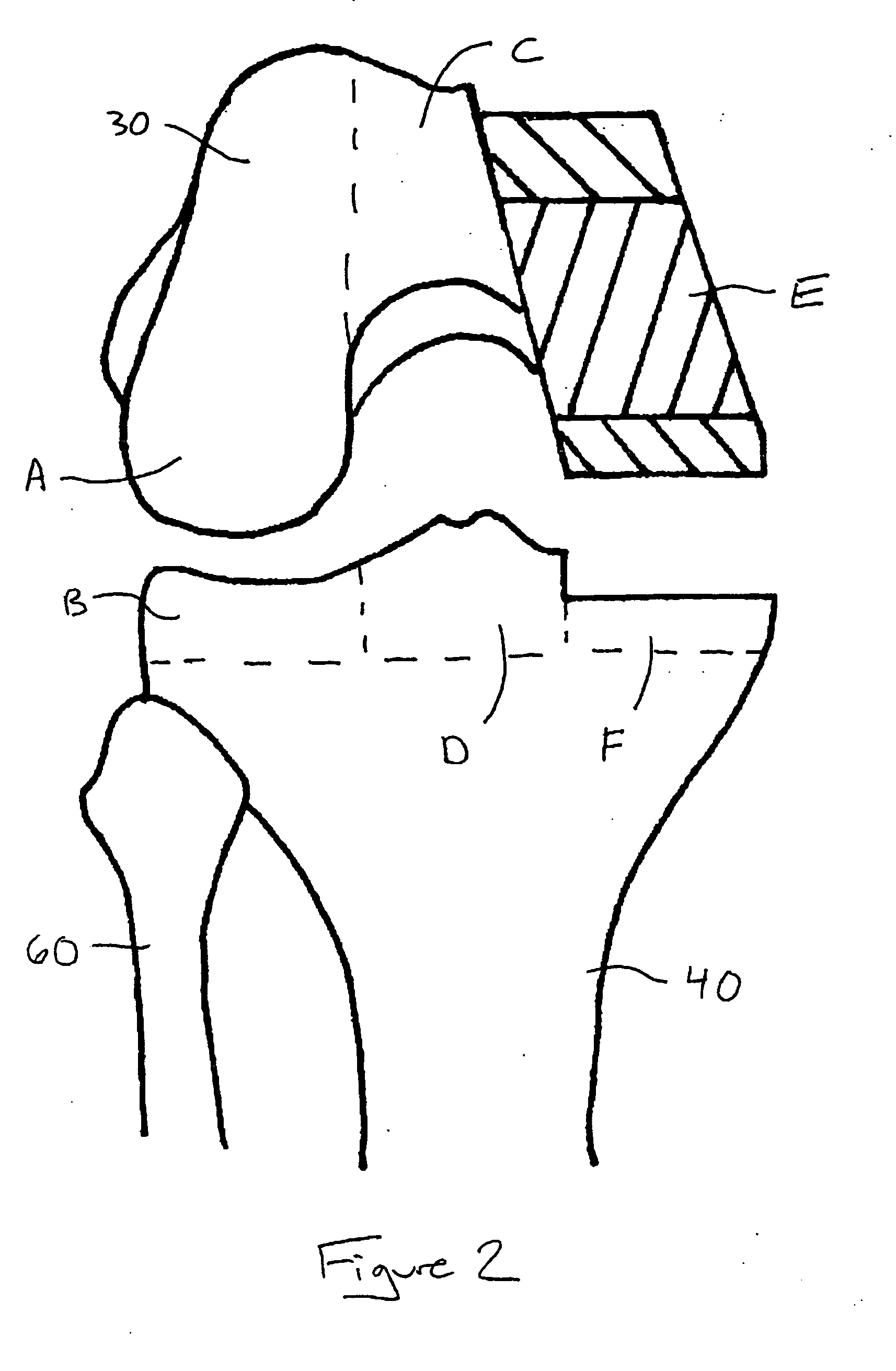Knee implant
a technology for implants and knees, applied in knee joints, medical science, prostheses, etc., can solve the problems of long healing and rehabilitation periods, large components, and patient inability to quickly return to normal activities
- Summary
- Abstract
- Description
- Claims
- Application Information
AI Technical Summary
Benefits of technology
Problems solved by technology
Method used
Image
Examples
first embodiment
[0064]FIGS. 7A-7D are perspective, top, side, and front views, respectively, of a backing tray 400, which may be implanted in the medial region F of the tibia 40. A mirror image (shown in FIGS. 18A-18C) embodiment of the backing tray 400 can be implanted in the lateral region B of the tibia 40. Preferably, the backing tray 400 is formed of a strong biocompatible metal such as a cobalt-chromium alloy, a titanium alloy, or stainless steel. Additionally or alternatively, the backing tray 400 may be formed from a strong ceramic (e.g., an alumina, zirconia, or carbon-based ceramic), one or more high performance polymers, and / or one or more high performance polymer composites (e.g., a composite material made of nano particles of PTFE and PEEK; particle ratios can be either fixed or can vary in the range on 0-100% (and vice versa), thereby enabling gradual changes in material properties in the component). Additionally or alternatively, the component may be made of a material of the types d...
second embodiment
[0085] The depressions 206, 906 of the first and second embodiment center femoral components 200, 900 are configured to slidingly receive a patellar backing device 1000, which will now be discussed with respect to FIGS. 15A-15D. Preferably, the patellar backing device 1000 is formed of a strong biocompatible metal such as a cobalt-chromium alloy, a titanium alloy, or stainless steel. Additionally or alternatively, the patellar backing device 1000 may be formed from a strong ceramic (e.g., an alumina, zirconia, or carbon-based ceramic), one or more high performance polymers, and / or one or more high performance polymer composites (e.g., a composite material made of nano particles of PTFE and PEEK; particle ratios can be either fixed or can vary in the range on 0-100% (and vice versa), thereby enabling gradual changes in material properties in the component). Additionally or alternatively, the component may be made of a material of the types described in U.S. patent application Ser. No...
PUM
 Login to View More
Login to View More Abstract
Description
Claims
Application Information
 Login to View More
Login to View More - R&D
- Intellectual Property
- Life Sciences
- Materials
- Tech Scout
- Unparalleled Data Quality
- Higher Quality Content
- 60% Fewer Hallucinations
Browse by: Latest US Patents, China's latest patents, Technical Efficacy Thesaurus, Application Domain, Technology Topic, Popular Technical Reports.
© 2025 PatSnap. All rights reserved.Legal|Privacy policy|Modern Slavery Act Transparency Statement|Sitemap|About US| Contact US: help@patsnap.com



